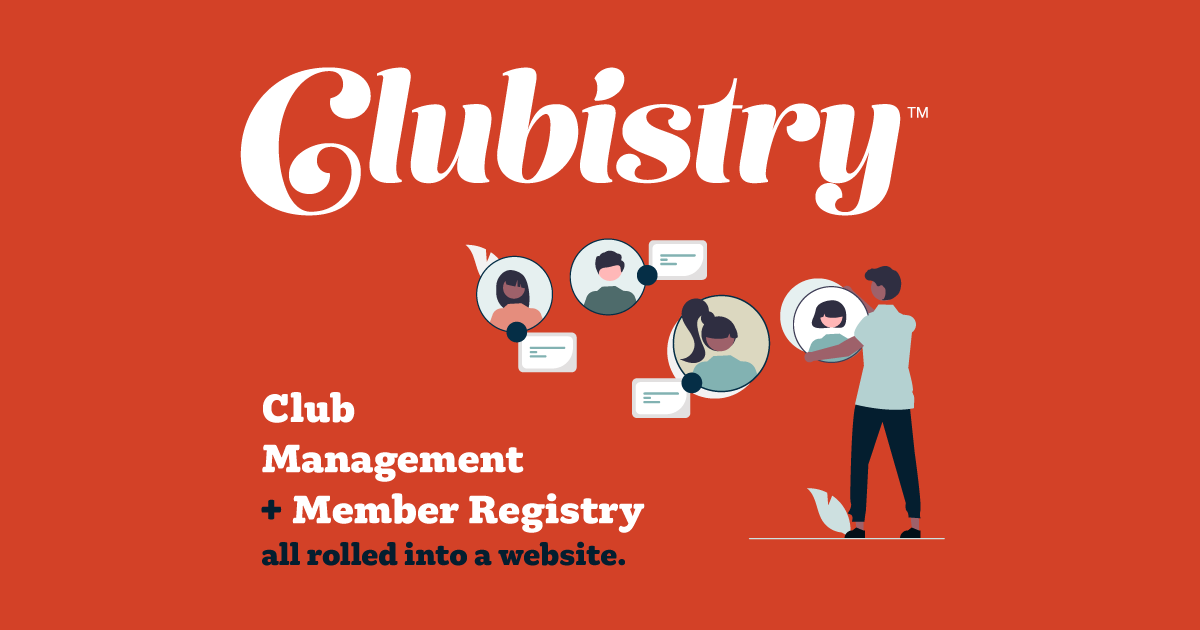Managing Club Website Content: What Public and Private Content Should Be Included?
10/16/2023

Clubs sometimes struggle not only with what content should go on their website, but which content should be available to the public, and which should be kept behind the login wall for members only. The answer to that question generally depends on what your club’s goals are with your website, as well what type of club the site is for.
Share Who You Are
Most clubs will want to have some pages on the public site that describe the club and its mission. This starts with your Home page and About page, where you describe the organization, its goals and values. Provide your mission statement. For some organizations there may be additional pages that help show what your club is about, and what it does. Many clubs include their bylaws or similar documents on the public site, as well as the history of the club and/or its importance in your community. These all serve as ways that the public can learn more about your club.
Especially in larger organizations, it’s also common to list board members, including contact information and maybe bios of each office holder. If the club has active committees that handle a number of responsibilities within the organization, you might have a page describing each committee, and listing the participants.
How to Join
Don’t forget to include a page about how people can join your club. Cover the requirements to join, the dues price and frequency, and the differences between membership levels if applicable. Link to downloadable PDF forms—or better yet, use online application forms.
It’s important that the join information be easy to find on your site. This is one of the items frequently promoted from the home page, both as links within text content and as promotional blocks.
Promote Your Public Activities
If your club holds public events, or sponsors some programs within the community, then you should use your website to promote these activities. Make it easy for club members, potential club members, and the general public to find information about these activities. Include dates, times, locations, and any details relevant to attending or participating in the events. If that is a large amount of content, consider breaking it down into one landing page with the key info (date, time, location), with sub-pages that are linked to and easy to glance over.
For example, if your camera club holds a picnic open to the public, that information can probably all be on a single page. But if your fiber arts guild is managing a 3 day conference with classes, speakers, get-togethers, and a vendor hall, you’ll want to break that kind of information down into smaller chunks that are easier to filter through. Start with the dates, location and cost information—what people are most likely to be looking for—on a single page that you use as a primary landing page for the event, and then link to more detailed information from there.
In organizations that sponsor activities or programs in the community, build a page or pages that provide the details about this. Include information about the program and why the club sponsors it. If appropriate, provide links to the program itself.
Addressing Club Goals with the Website
Once you've covered the more obvious content that most organizations want to have on their websites, it’s time to determine “what else?” Remember that websites are all about communication—both internally and externally. How can your website best be leveraged to communicate around your organization? Discuss it with the decision makers in your organization, whether that be the board of directors, a special committee, or the entire membership.
What are the goals, and the priorities of the club? Here are some common examples:
- It’s very important to attract new members.
- Our membership is passionate about providing a specific service.
- We prioritize public education about our club’s area of interest.
- Our members need public profiles where they can spotlight their work (for example, artist guilds or photography clubs).
- We just want a supportive community for our members, without any larger outside goals.
Sometimes you will have to make some compromises on goals. Is this a large national organization or a smaller local organization? A national organization may feel it’s very important to provide educational resources for the public. In fact, for many national organizations, education is part of their mission statements. On the other hand, a smaller local club in the same area of interest may decide that while they also focus on educational efforts in their activities, their website could simply point to the national organization’s website for further education. The national organization probably has more resources (both in people and in money) to tackle a big education effort, and if they’ve done a good job of the task, then the smaller organization may simply elect to focus their website on their local community efforts or events.
Outline your club’s short and long term goals, and steps you might take to meet those goals. Then look at how your website might support meeting them.
Should Content be Public or Private?
One of the challenges of club websites is that many of them, if not most, support two audiences – the public and the membership. It is absolutely possible to do both, but it’s important that you understand which parts of what you’re doing are for the membership, and which are for the public, as well as what the needs are for both groups.
It’s also important to review your analytics so you understand who is using your site. You might be surprised! You might assume that it is mostly members that are using your site, only to discover that 70% of your site traffic comes from organic Google searches, meaning random anonymous users finding your site in searches. This might lead you to adjust your goals.
Private Content is for Members’ Eyes
Your organization may not offer any online services for members only. Or it may be as simple as being able to log into the website to access some documents. If your club chooses to manage the membership online through the website, then members will probably have a place to update their contact information or profile. Maybe pay dues online. Your club may choose to make extensive offerings behind the login wall, like specialized content that only members have access to. Committees might have sections of the site that only they can access that contain content relevant only to that committee. These are all pretty clearly private areas of content that belong behind the login wall.
Additionally, having content that they might be looking for behind the login helps keep members logging into the system, which in turn encourages them to look at other things you’ve put into the members-only area. It also makes them more likely to update their profile and contact information when needed.
Of course most clubs have various documents that they need to make available, like minutes from meetings, and results from votes. Should this be public, or private? The answer to that largely depends on those goals you set for your organization! If there’s nothing controversial in the documents, there may be no harm in letting them be publicly available. There are, however, some reasons for keeping some content private.
Public Content Helps Others Find Your Club
If your goals include producing content specifically for the general public, and if it’s important that the public find that content, then you should keep in mind that your miscellaneous documents posted to the public website will be indexed by search engines. If someone is searching on a topic that your club targets, do you want their search results on that topic to include some mentions of it in 3 year old meeting minutes? Or would you prefer that they find the carefully curated page you’ve created about it? If your site is especially content heavy, with many primary navigation categories, each with many secondary and tertiary pages, then adding sections for miscellaneous documents could just add to confusion and trouble people might have in finding the content they are looking for.
Maintenance for Your Club Website
One thing to remember is that no website is ever “finished”. You might wrap up a particular effort, but websites are living documents that evolve over time. It’s important that information on the site be reviewed periodically to check that it’s still accurate, and doesn’t need updating. If the site is small, without too many pages, then this might be managed by a single person or committee; but with a large site, it is probably advisable to break up the task between different groups or committees. For example, most of the content on the site might be divided up between committees, who are responsible for an annual review of the pages assigned to them. It’s also a good idea to have some sort of protocol in place for how new content gets to the website. Does the board have to approve it? A committee? Different committees reviewing what is related to their committee?
Lastly, as we mentioned before, someone in the club should be monitoring analytics so that you are aware of how your site is performing, and where changes might need to be made. Modern analytics show you more than just page hits, and you can learn a lot about your audience by studying traffic flows through the website. Are people finding the content you think they should see? Are they staying long enough to read it? It can also help to have someone in your organization who can stay up to date with some of the currently preferred optimization methods for website content, if your goals include attracting traffic from non-members.
Conclusion
Many clubs find the task of building out and maintaining a website and its content to be somewhat intimidating, especially if the decision makers are not sure how exactly a website is put together. It’s important to remember that the task of building out a website is not the same as determining what should be ON a website. Approach the project like any other club business decision. Discuss it. Assign people to do some research, looking at examples, and come up with options and ideas for the decision makers to consider. Then come up with your plan for what content you need, and who should write or curate it. Once it’s all in place, continue to evaluate it to make sure it’s helping your organization meet its goals. If not, make adjustments.
And because websites are never “finished”, it can be easier to let go of website content that is no longer relevant or helpful. It’s not like the boxes of brochures that you had printed up that are sitting in storage somewhere. You haven’t wasted time or money just because you decide not to keep some content up. It’s easier to try things out to see how well they work, and to adjust when the needs of the organization evolve.
If you're evaluating options to simplify managing your club website and member registrations, sign up for a free Clubistry website and see how easy it can be.
